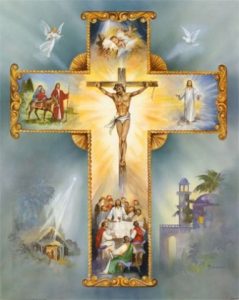 Father, forgive them, they know not what they do. (Luke 23:34)
Father, forgive them, they know not what they do. (Luke 23:34)
The Catholic Church is always under attack. Starting at the birth of our Lord Jesus Christ, when the Holy Family had to flee to Egypt.
For two thousand years, millions of Catholics were persecuted by Jews, Pagan Romans, Muslims, Communists, Nazis (National Socialists) etc. Under assault from external threats and from within, in the past and today. When attacked physically, the sacrifice and blood of martyrs fertilized people hearts, converting and bringing thousands to the Catholic Church. When undermined from inside, by all sort of heresies, the holy Doctors of the Church exposed and corrected them and with help of ecumenical councils prevented errors from poisoning the teachings of the Church, making sure that it is consistent with Holy Scripture and Apostolic Tradition.
Our Lord said, “Father, forgive them, they know not what they do.” to bring to our attention the truth which St. Paul refers to in his letter to the Ephesians 6:12 “For our struggle is not with flesh and blood but with the principalities, with the powers, with the world rulers of this present darkness, with the evil spirits in the high places.”
The Devil never sleeps, so the war never stops, and he is using confused, misguided people to fight it for him. In the past he used devoted Jews, today he is using devoted Protestants. By changing the Catholic Bible (as much as he could without exposing himself as the mastermind behind it) and preying on people’s ignorance and feelings, the Devil was able to create animosity towards the Catholic Church. In effect millions of people with the support of their local rulers, seeking enrichment through the confiscation of Catholic Church properties, led by controversial figures, rebelled and left the Catholic Church to create their own churches. As an effect today, a significant number of Christians are Protestants. Since the survival of Protestant churches, from the beginning, depended on being in opposition to Catholicism, today the teachings of those churches and the teachings of the Catholic Church are like two different languages, some words are the same, other familiar, but communicating and reaching an agreement seems impossible.
One day somebody gave me a page of paper titled:
Know the truth, read the KJV Bible and it will set you free! Catholicism is a False Religion!
- Mary is not our intercessor. Bible says Jesus is our only intercessor. (1 Timothy 2:5)
- Mary was not without sin. (Luke 1:46-47)
- Praying to Mary is idol worship. We are to keep ourselves from idols. (Exodus 20:4, Leviticus 26:1, Ezekiel 20:24, 2 Kings 17:41, Ezekiel 14:3)
- We are to call no man on earth (the Pope/(false prophet), priests) our Father. (Matthew 23:9)
- We are not to pray using vain repetitions (Hail Mary, the Rosary). (Matthew 6:7)
- Purgatory is not in the Bible, Hell is. (Revelation 21:18, Revelation 20:15, Matthew 13:50, Luke 12:5)
- We are saved by grace, not works. (Ephesians 2:8-9, Romans 11:6)
- The sabbath is on the 7th day. (Sunday worship is sun-god worship). (Genesis 2:2-3, Exodus 20:8-11, Leviticus 23:1)
I decided to search for the truth in the KJV Bible. Since the devil, to camouflage his real intentions, likes to imitate God, to avoid falling in to the trap, I started with the Catholic Bible, selected quotes which can be used in the defense of the Catholic doctrine and then used the Protestant’s KJV version in my dispute, thus making my line of argument hard to reject since they’d have to reject their own doctrine.
Sins of Catholics number 1, 2, 3 and 5 listed on this sheet of paper were addressing our relationship with the Virgin Mary. Wondering what the KJV Bible says about the Mother of Our Savior I turn to the Gospel according to Luke, which is the one containing the most information about Her.
From the KJV Bible I learned that: “the angel Gabriel was sent from God unto a city of Galilee, named Nazareth, to a virgin espoused to a man whose name was Joseph, of the house of David; and the virgin’s name was Mary. And the angel came in unto her, and said, Hail, thou that art highly favored, the Lord is with thee: blessed art thou among women. And when she saw him, she was troubled at his saying, and cast in her mind what manner of salutation this should be.” (Luke 1:26-29)
“What manner of salutation this should be,” cast Virgin Mary’s mind. Let’s ask ourselves what manner of salutation this is: Hail, thou that art highly favored, the Lord is with thee: blessed art thou among women. Today this is quite unusual, but in the past ambassadors and others prominent visitors would greet the monarch in this manner.
The Angel from God, by addressing Mary this way, not only payed Her respect as the future mother of God, but as a Queen, the Mother of a King. (Luke 1:33, 22:29-30, Matthew 19:28,)
The Holy Ghost confirmed the message of the Angel Gabriel through Mary’s cousin Elisabeth, the wife of Zacharias: And it came to pass, that, when Elisabeth heard the salutation of Mary, the babe leaped in her womb; and Elisabeth was filled with the Holy Ghost: And she spoke out with a loud voice, and said, blessed art thou among women, and blessed is the fruit of thy womb. And whence is this to me, that the mother of my Lord should come to me? (Luke 1:41-43)
This last sentence shows an uncommon respect Elisabeth payed to her much younger cousin, by seeing this visitation as a great privilege.
Mary’s response in both situations is a manifestation of her great and unusual qualities. When the angel said unto her: Fear not, Mary: for thou hast found favor with God. And, behold, thou shalt conceive in thy womb, and bring forth a son, and shalt call his name JESUS. (the Son of God)
She replied with innocence, modesty, simplicity and clarity of thinking: How shall this be, seeing I know not a man? Then She submitted Herself and Her will to the will of God: Behold the handmaid of the Lord; be it unto me according to thy word. She rejected earthly pleasures by seeing happiness in God: My soul doth magnify the Lord, and my spirit hath rejoiced in God my Savior.
Dear Brothers and Sisters, today a pregnant mother or wife of a senator, or some other public figure would demand the best accommodation and services, often screaming at the top of her lungs: Do You know who I am? Mary, the Mother of God delivered baby Jesus, in some stable; And she brought forth her firstborn son, and wrapped him in swaddling clothes, and laid him in a manger; because there was no room for them in the inn. (Luke 2:7)
Of all humanity, God chose Mary to be the Mother of His son.
Today some people are judging God and questioning His decision by claiming that: “Mary was not without sin” (2), somehow drawing this conclusion from Luke 1:46-47 And Mary said, my soul doth magnify the Lord. And my spirit hath rejoiced in God my savior.
We must ask ourselves; is it possible that for the pure and perfect son of God, would God Himself borrow the contaminated body of a sinner to stay in during pregnancy for nine months?
No version of the Bible gives any record of a single sin committed by Mary the Mother of our Lord.
Another claim is that; Mary is not our intercessor. The Bible says Jesus is our intercessor (1).
Mary the Mother of God is not our intercessor? Really?
When our Lord was twelve years old, the Holy Family went up to Jerusalem. And when they had fulfilled the days, as they returned, the child Jesus tarried behind in Jerusalem; and Joseph and his mother knew not of it. After three days they found him in the temple, and he went down with them, and came to Nazareth, and was subject unto them (Luke 2:43,51)
We learn from John chapter 2 that Jesus at the request of Mary, turned water into wine at the marriage in Cana of Galilee. He obeyed His Mother when He was twelve and honored Her when He was thirty years old. Is it possible that Jesus – the only Son of God would become a hypocrite? Expecting us to honor our parents and not honor His own mother? If our Lord asks us to love our enemies, how pleased He will be if we will honor and love His mother the Virgin Mary?
To bring more clarity to what I am talking about I would like to quote a sentence taken from the prayer of the priests exorcist of Auxilium Christianorum; “Most gracious Virgin Mary…we offer our prayers, supplications, and good works to Thee so that Thou may purify them, sanctify them, and present them to Thy Son as a perfect offering.”
Another from the prayer Hail Holy Queen (Salve Regina); Turn, then, O most gracious Advocate, thine eyes of mercy toward us, and after this, our exile, show unto us the blessed fruit of thy womb, Jesus.
The Virgin Mary is our advocate before the King of Heaven and Earth, Her son our Lord, Jesus and is a powerful protector in our spiritual battle against evil forces.
Prayers directed to God the Father in the Catholic Church, among them the Litany of The Blessed Virgin, end with the words: “Through Christ our Lord,” which makes them consistent with KJV (Timothy 2:5-6).
The author of this document suggests, basing his position on line 4 from Exodus chapter 20, that Praying to Mary is idol worship (3). It is easy to take one line from a speech and draw a desired conclusion, but to find the truth we must read entire statement.
I am the LORD thy God, which have brought thee out of the land of Egypt, out of the house of bondage. Thou shalt have no other gods before me. Thou shalt not make unto thee any graven image, or any likeness of any thing that is in heaven above, or that is in the earth beneath, or that is in the water under the earth: Thou shalt not bow down thyself to them, nor serve them: for I the LORD thy God am a jealous God, visiting the iniquity of the fathers upon the children unto the third and fourth generation of them that hate me;(Exodus 20:2-5)
God chose the Virgin Mary and elevated Her to the position of mother of His Son and for this simple reason, loving, honoring Her and asking Her to pray for us is not idol worship like some imply. If we are obligated to love everybody, enemies included, and we can ask anybody for help and to pray for us, why not the Blessed Virgin Mary? It is not wise to reject God’s gifts, and Virgin Mary is a great gift, such refutation is offensive to God the Father, it was His decision, and to the Son who took His body from Her, and to the Holy Spirit who planted it. For this reason, Blessed be God in His Angels and in His Saints (Divine Praises) and in Virgin Mary Mather of God too.
In search for the truth we should ask ourselves questions; where does this dislike of the Virgin Mary comes from? If we find out who has a reason to hate Her then we will find the one behind it all.
Who has a reason to hate the Virgin Mary?
From the book of Genesis we learn that God created everything starting with the heavens and the earth. God created mankind in his image. God blessed them and God said to them: Be fertile and multiply; fill the earth and subdue it. (Genesis 1;28 KJV) and The LORD God formed out of the ground all the wild animals and all the birds of the air, and he brought them to the man to see what he would call them; whatever the man called each living creature was then its name. (Genesis2;19 KJV)
In a certain moment of creation God brought into existence beautiful angels. Sadly, a third of them, under the leadership of Lucifer, rebelled against God. This started a never-ending war. Lucifer and the fallen angels were thrown out of heaven. The Devil is powerless against God and so he takes revenge on mankind, we are his target. We may assume that this rebellion caused God to set up a simple challenge, a test for the first people. The Devil knew that he cannot succeed against Adam and Eve together, so he started with Eve first, then he used her to flip Adam. This kind of tactic is called divide and conquer. Thousands of years later the same devil was powerless against the Virgin Mary of Galilee. Lucifer and his cohorts, successful in creating so much evil in the world were smacked around and beaten up by young girl. David against Goliath again? The difference is that new “David” is wearing skirt and the disproportion of powers is even greater. Beaten by girl, what a disgrace.
Mary, by freely accepting the will of God, by saying; “Behold the handmaid of the Lord; be it unto me according to thy word’ started the process of redemption. Eve is the original mother of man, but Mary is the true mother of man. That is why the devil hates Her so much.
Today the devil is using the same tactic to divide Christians. He is using good willing people to eliminate our most vigorous protector, Virgin Mary from our hearts and our lives.
The devil wants us to stop reciting the Holy Rosary, universally recognized by priests exorcists as one of the most powerful protections against evil spirits – the nuclear bomb against the devil, by saying; We are not to pray using vain repetitions (Hail Mary, the Rosary) (5) Matthew 6:7 But when ye pray, use not vain repetitions, as the heathen doe. For they think that they shall be heard for their much speaking. KJV
There is repetition in the Holy Rosary, but it is not vain for sure, because the rosary is a combination of vocal and mental prayer. It begins with The Apostles’ Creed, then The Lord’s Prayer, and three Hail Mary offered in the intention of increasing the virtues of faith, hope and charity followed by Glory be to the Father, and to the Son, and to the Holy Spirit …Each decade of Rosary starts with the annunciation of the mystery. The Mysteries of the Rosary are meditations on episodes in the life and death of Jesus from the Annunciation to the Ascension and beyond. Each of these Mysteries contemplates five different stages of Christ’s life, for example the five Joyful Mysteries are; the Annunciation, Visitation, Nativity, Presentation in the Temple and Finding in the Temple.
Recitation of each decade starts with the Lord’s Prayer, then ten Hail Mary and ends with; Glory be to the Father … and a short prayer to our Lord; O my Jesus forgive us of our sins. Save us from fires of hell. Lead all souls into heaven, especially those in most need of Thy mercy.
The Rosary ends with the prayers; Hail, Holy Queen, and O God, whose only-begotten Son, by His life, death, and resurrection, has purchased for us the rewards of eternal salvation; grant we beseech Thee, that meditating upon these mysteries of the most Holy Rosary of the Blessed Virgin Mary, we may imitate what they contain and obtain what they promise. Through the same Christ our Lord. Amen.
It is normal practice to attach intentions to the Rosary, which makes it more of an offering, than a simple prayer.
We are to call no man on earth (the Pope/(false prophet), priests) our Father (4).
And call no man your father upon the earth: for one is your Father, which is in heaven. (Matthew 23:9)
Honour thy father and thy mother: that thy days may be long upon the land which the LORD thy God giveth thee. (Exodus 20:12)
How we can square those to verses from the same KJV Bible? Answer is simple; read entire 23rd paragraph of Matthew and contemplate what that whole section is about, what the problem Our Lord is addressing. If taken out of contest those verses contradicting each other. Analyzed within the paragraphs they were taken from and the entire Holy Bible they are not in conflict at all.
In John 19:11 Jesus is pointing to Pilate; Thou couldest have no power at all against me, except it were given thee from above. Biological fathers and priests are delegated by God, given to us from above to guide us during our earthly voyage and for this reason should be treated with respect. Honoring them as such is honoring God.
The author of this document is claiming that the Pope is a false prophet. In search for the truth I turned to the KJV Bible and learned from Matthew 16:18-19 that the first Pope, Saint Peter was much more than a prophet; And I say also unto thee, that thou art Peter, and upon this rock I will build my church; and the gates of hell shall not prevail against it. And I will give unto thee the keys of the kingdom of heaven: and whatsoever thou shalt bind on earth shall be bound in heaven: and whatsoever thou shalt loose on earth shall be loosed in heaven. No prophet from the past had such power like the power our Lord Jesus gives to Saint Peter and to His successors.
We could study the lives of every Pope, but for most of us it is enough that after so many years of struggle and attacks from the outside and inside, today’s teachings of the Catholic Church which are based on the Bible and Apostolic tradition are consistent with teachings from two thousand years ago. Many Popes like, prophets from the Old Testament, were ahead of their time, warning against incoming challenges. For example, on December 8, 1864, Pope Pius IX issued The Syllabus of Errors, a document warning, among many, against coming distractive ideologies of communism, imposed through the revolution of 1917 in Russia, and socialism adapted by Adolf Hitler in Third Reich (Nazi Germany) in 1933. It is the fact that the collapse and dismantle of the Eastern, Communist Block wouldn’t have happened without the collective work of President Ronald Regan and Pope John Paul II.
Purgatory is not in the Bible, Hell is (6).
In KJV Bible, Luke 16:19-26, Jesus is telling the story of; a certain rich man, which was clothed in purple and fine linen, and fared sumptuously every day and a beggar named Lazarus, which was laid at his gate, full of sores. When the beggar died, he was carried by the angels into Abraham’s bosom. The rich man also died, and was buried; And in hell he lift up his eyes, being in torments, and seeth Abraham afar off, and Lazarus in his bosom. And he cried and said, Father Abraham, have mercy on me, and send Lazarus, that he may dip the tip of his finger in water, and cool my tongue; for I am tormented in this flame. But Abraham said, Son, remember that thou in thy lifetime receivedst thy good things, and likewise Lazarus evil things: but now he is comforted, and thou art tormented. And beside all this, between us and you there is a great gulf fixed: so that they which would pass from hence to you cannot; neither can they pass to us, that would come from thence.
In Matthew 18:23-34 Our Lord is saying; Therefore is the kingdom of heaven likened unto a certain king, which would take account of his servants. And when he had begun to reckon, one was brought unto him, which owed him ten thousand talents. But forasmuch as he had not to pay, his lord commanded him to be sold, and his wife, and children, and all that he had, and payment to be made. The servant therefore fell down, and worshipped him, saying, Lord, have patience with me, and I will pay thee all. Then the lord of that servant was moved with compassion, and loosed him, and forgave him the debt. But the same servant went out, and found one of his fellow servants, which owed him a hundred pence: and he laid hands on him, and took him by the throat, saying, Pay me that thou owest. And his fellow servant fell down at his feet, and besought him, saying, have patience with me, and I will pay thee all. And he would not: but went and cast him into prison, till he should pay the debt. So when his fellow servants saw what was done, they were very sorry, and came and told unto their lord all that was done. Then his lord, after that he had called him, said unto him, O thou wicked servant, I forgave thee all that debt, because thou desiredst me: Shouldest not thou also have had compassion on thy fellow servant, even as I had pity on thee? And his lord was wroth, and delivered him to the tormentors, till he should pay all that was due unto him.
From the least verse of the gospel of Luke, presented above, we can conclude that heaven and hell are permanent, final destinations. There is no going from one to another.
In the In Matthew 18:23-34 Jesus is talking about temporary detention by saying; And his lord was wroth, and delivered him to the tormentors, till he should pay all that was due unto him.
About God’s justice St. Paul is talking in first letter to Corinthians 3:8-15
Now he that planteth and he that watereth are one: and every man shall receive his own reward according to his own labour. For we are labourers together with God: ye are God’s husbandry, ye are God’s building. According to the grace of God which is given unto me, as a wise master builder, I have laid the foundation, and another buildeth thereon. But let every man take heed how he buildeth thereupon. For other foundation can no man lay than that is laid, which is Jesus Christ. Now if any man build upon this foundation gold, silver, precious stones, wood, hay, stubble; Every man’s work shall be made manifest: for the day shall declare it, because it shall be revealed by fire; and the fire shall try every man’s work of what sort it is. If any man’s work abide which he hath built thereupon, he shall receive a reward. If any man’s work shall be burned, he shall suffer loss: but he himself shall be saved; yet so as by fire.
Our Lord, Jesus and St. Paul are talking about purgatory; And his lord was wroth, and delivered him to the tormentors, till he should pay all that was due unto him. / If any man’s work shall be burned, he shall suffer loss: but he himself shall be saved; yet so as by fire.
Denying the existence of purgatory is denying of God’s justice and mercy ad the same time, and it is evil.
We are saved by grace, not works (7).
There is no salvation without grace of God, but suggesting that our decisions, our actions or lack of actions have nothing to do with it, is saying that, in the Holy Bible and the KJV Bible too, the Ten Commandments are not to be followed. Thousands of pages of God’s Word – God’s Mercy, is good for nothing, just another book.
And, behold, I come quickly; and my reward is with me, to give every man according as his work shall be. (Revelation 22:12)
How differently we Catholics see and understanding Holy Scripture, even its corrupted KJV version. For a Catholic, studying Holy Scripture slowly turns into a multi-dimensional experience, it is not only a source of knowledge and wisdom but also a source of joy and God’s love. Protestant leaders, by promoting selected passages of the Bible and dismissing others are creating a false image of God. Those who are challenging the Catholic Church should study the history and teachings of the Catholic Church including the Fathers and Doctors of the Church, and confirm it with the Holy Scripture always keeping in mind these verses from the Bible:
Know this first of all, that there is no prophecy of scripture that is a matter of personal interpretation. (2Peter 1:20)
The fear of the LORD is training for wisdom, and humility goes before honors. (Proverbs 15:33)
But even if we or an angel from heaven should preach [to you] a gospel other than the one that we preached to you, let that one be accursed! (Galatians 1:8)
Don’t argue with protestants, avoid animosity print out and give it to them: To our brothers and sisters in Christ.
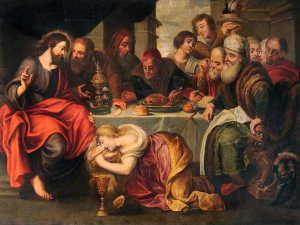 Humility
Humility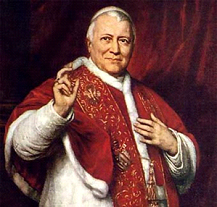 Smoke of Satan in The Church – Part 6
Smoke of Satan in The Church – Part 6 Saint Fulgentius
Saint Fulgentius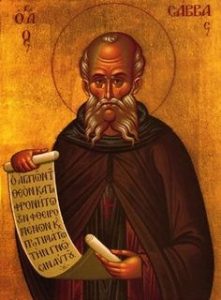 Saint Sabas
Saint Sabas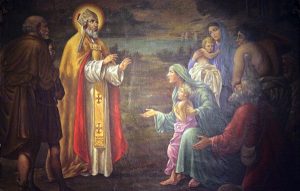 Saint Malachy d’Armagh
Saint Malachy d’Armagh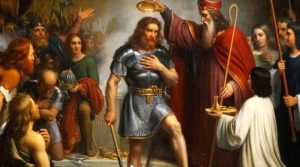 Saint Remigius
Saint Remigius Father, forgive them, they know not what they do. (Luke 23:34)
Father, forgive them, they know not what they do. (Luke 23:34)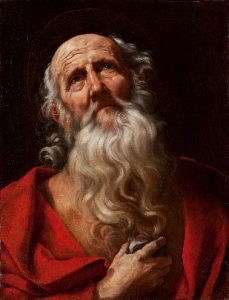 Saint Jerome
Saint Jerome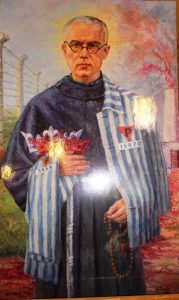 Saint Maximilian Kolbe
Saint Maximilian Kolbe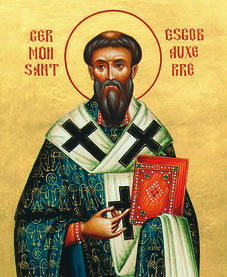 Saint Germanus
Saint Germanus